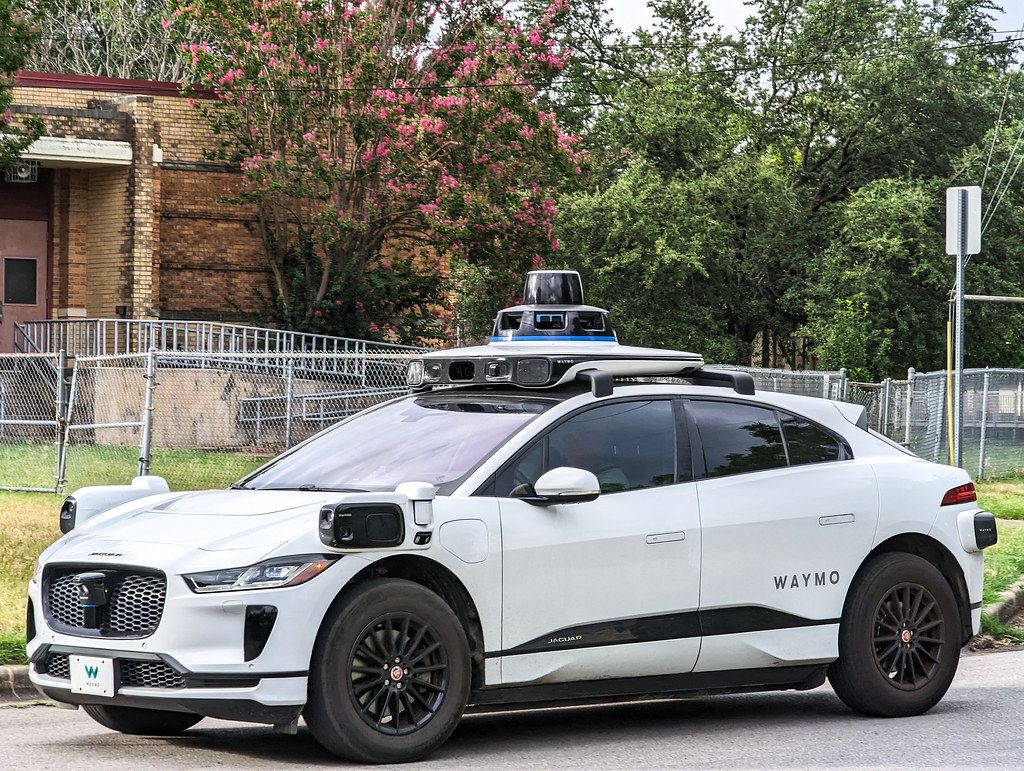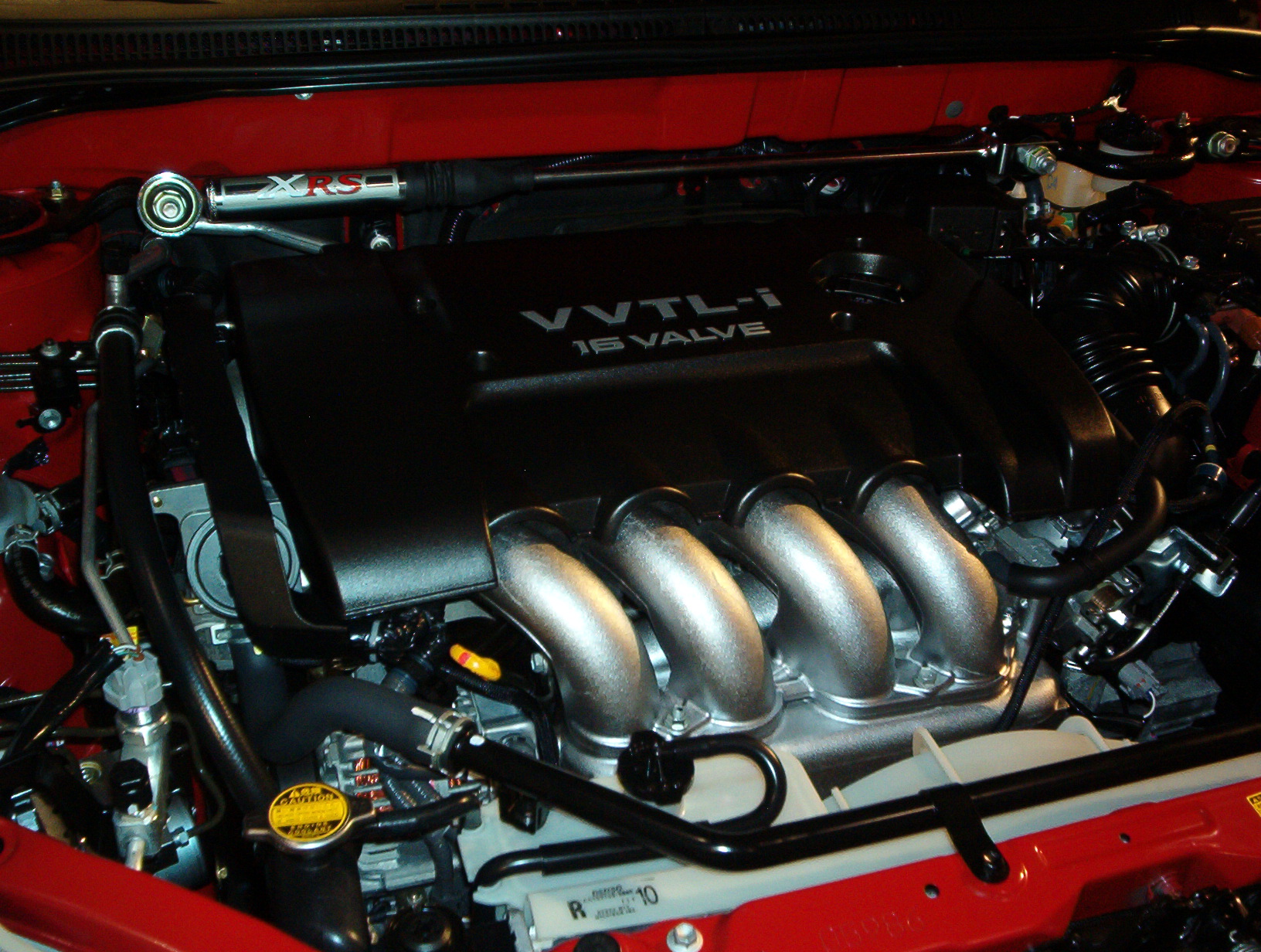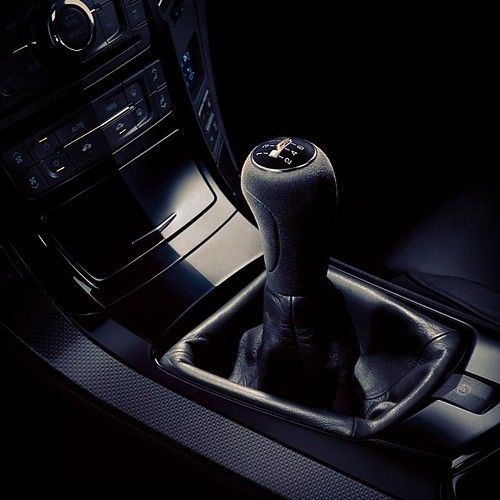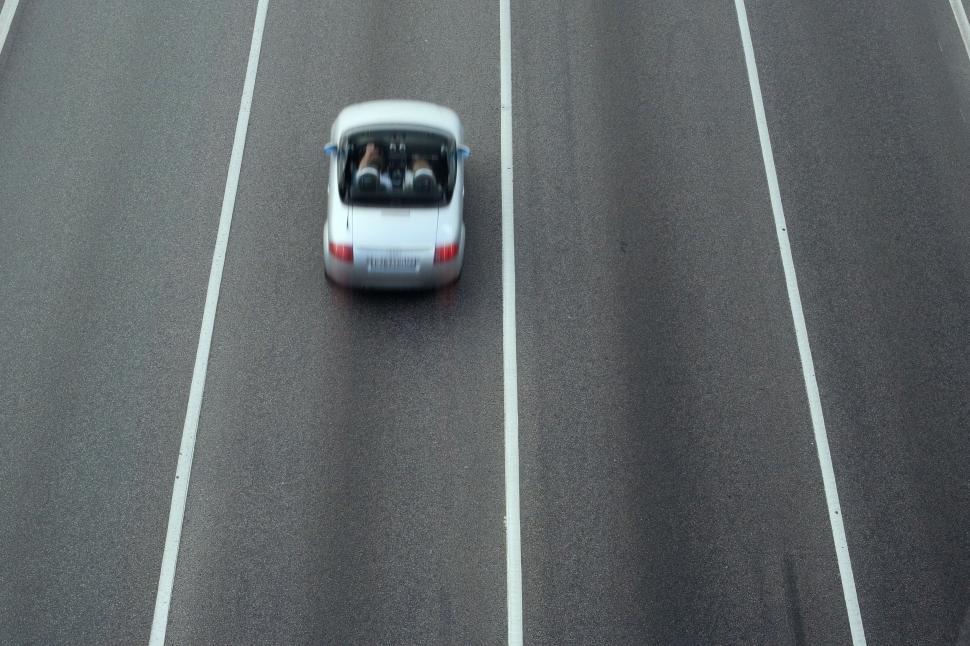
The allure of open-air driving is undeniable. Cruising with the top down, feeling the wind, and enjoying the sun is a dream for many automotive enthusiasts. Convertibles often embody freedom and a spirited driving experience, adding a unique joy to the automotive landscape. However, the romance of a drop-top can quickly turn into a financial headache if not chosen wisely, particularly when it comes to long-term value retention.
While some convertibles become cherished classics or maintain robust resale figures, a significant number fall into a notorious category: those that shed value faster than leaves in autumn. Owners of these particular models often find themselves in a challenging position, struggling to recoup their initial investment or even a reasonable portion of it when it comes time to sell. These aren’t just cars that depreciate naturally; these are models that have become synonymous with poor value retention, leaving their owners with what many describe as a “loan shark on tires.”
In this comprehensive analysis, we delve into eleven convertibles that have earned a reputation for being notoriously difficult to resell without incurring a substantial financial loss. Drawing on expert insights and market observations, we explore the specific reasons behind their rapid depreciation—from design missteps and performance shortcomings to brand challenges and complex mechanical issues. For anyone considering the purchase of a convertible, understanding these cautionary tales is crucial to making an informed decision and avoiding buyer’s remorse.
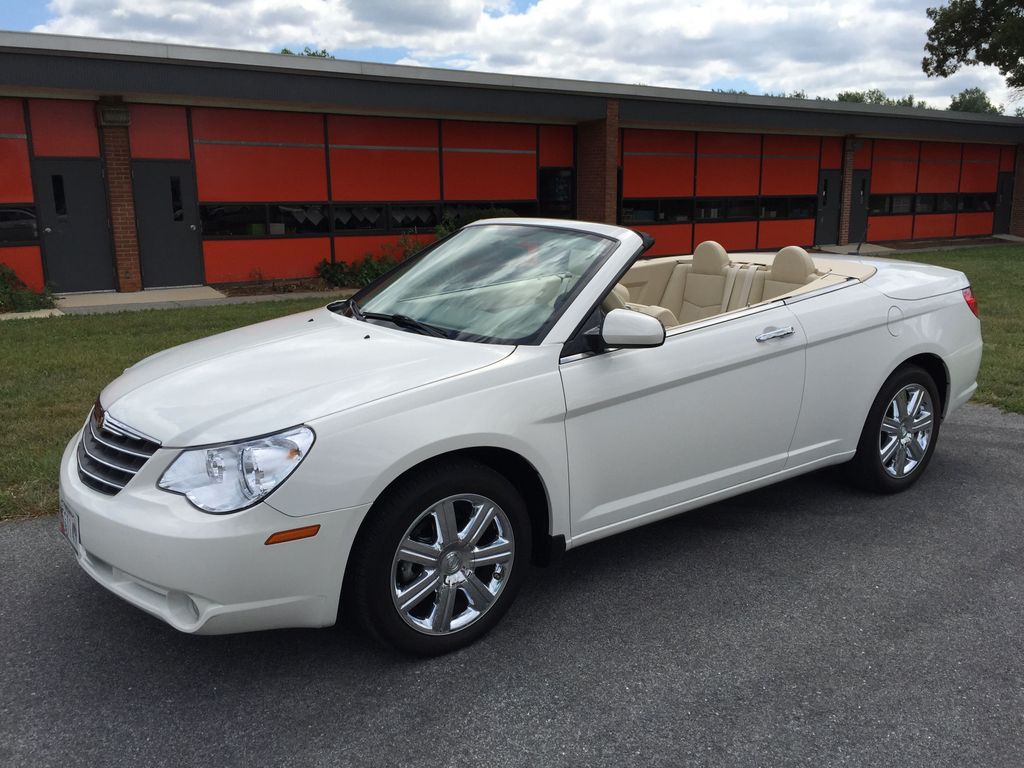
1. **Chrysler Sebring Convertible**The Chrysler Sebring Convertible quickly became a prime example of a vehicle that struggled immensely in the resale market, consistently losing value at an alarming rate. Its struggles were deeply rooted in a combination of outdated design elements and a distinctly mediocre performance profile that failed to inspire confidence or excitement among buyers. From its initial launch, the Sebring was often perceived as lagging behind its more refined and dynamic competitors, a perception that only solidified as newer, more capable models entered the market.
Beyond its uninspiring aesthetics and driving dynamics, the Sebring was plagued by frequent mechanical issues. These problems ranged from engine troubles to electrical glitches, which not only diminished the ownership experience but also significantly increased the cost of maintenance and repairs over time. Such reliability concerns are a major deterrent for used car buyers, who naturally seek dependable transportation, and the Sebring’s reputation for mechanical woes certainly did not help its case.
Adding to its list of drawbacks was an interior widely criticized for its use of cheap materials. The tactile experience within the cabin did little to elevate the driving experience or justify the car’s price point, especially when compared to rivals that offered superior craftsmanship and better-quality finishes. This lack of perceived quality in critical areas like the interior further eroded buyer confidence and contributed to the car’s rapid descent into the lower echelons of the used car market.
As a direct consequence of these compounding factors—outdated design, lackluster performance, persistent mechanical issues, and a cheap-feeling interior—the Chrysler Sebring Convertible became less and less desirable. This decline in appeal directly translated into significant depreciation, leaving owners with vehicles that were worth far less than expected. It solidified its place as one of the convertibles hardest to resell without a substantial loss, embodying the very essence of a depreciating asset.
Car Model Information: 2006 Chrysler Sebring Touring
Name: Chrysler Sebring
Class: Mid-size car
Manufacturer: Chrysler
Production: 1994–2010
Predecessor: Chrysler LeBaron
Successor: Chrysler 200
Categories: 2000s cars, 2010s cars, All articles needing additional references, All articles that may contain original research, All articles with a promotional tone
Summary: The Chrysler Sebring ( SEE-bring) is a mid-size automobile manufactured and marketed by Chrysler from 1995 to 2010 in convertible (three generations), sedan (two generations), and coupe (two generations) body styles. Both coupe generations were a Chrysler design with engineering input from Mitsubishi and were built at Mitsubishi’s Normal, Illinois facility (operated then by Diamond-Star Motors). The range was introduced in 1995, with the Coupe replacing the Chrysler LeBaron coupe. In 1996 Chrysler introduced the convertible, replacing its LeBaron counterpart.
In 2000, (then) DaimlerChrysler presented the redesigned Sebrings — Sedan, Coupe, and Convertible — at the New York Auto Show for model year 2001. The Coupe used a variant of the Mitsubishi Eclipse ST Platform, while the sedan and convertible used the Chrysler JR platform successors to the Chrysler Cirrus. The coupe was discontinued after 2005.
The third generation sedan was introduced for 2007, and a revised convertible the following year. New options included all-wheel drive on sedans and an available retractable metal top for the convertible. All Sebring models were replaced by the Chrysler 200 for the 2011 model year.
Get more information about: Chrysler Sebring
Buying a high-performing used car >>>
Brand: Chrysler Model: Sebring
Price: $9,998 Mileage: 43,190 mi.
Read more about: Lemon in the Garage: 14 Models Drivers Vow Never to Buy Again Due to Poor Build Quality

2. **Pontiac G6 Convertible**The Pontiac G6 Convertible faced a particularly brutal blow to its resale value, primarily due to the dramatic discontinuation of the Pontiac brand itself in 2010. While the car did possess a decent styling that initially attracted some buyers, its underlying issues soon overshadowed any aesthetic appeal it might have offered. The abrupt exit of an entire automotive brand created a ripple effect that devastated the value retention of its entire lineup, and the G6 Convertible was no exception.
Even prior to Pontiac’s demise, the G6 Convertible was marred by a series of reliability problems that frustrated owners. These mechanical shortcomings, coupled with a generally lackluster driving experience, meant the car struggled to establish a strong foothold in a competitive market. Buyers typically look for vehicles that offer both style and substance, and the G6, unfortunately, fell short on the latter, making it a questionable investment from the outset.
The discontinuation of the Pontiac brand only exacerbated the G6 Convertible’s already dim resale prospects. Potential buyers became understandably wary about the long-term availability of parts and the ease of obtaining service for a vehicle from a defunct brand. This uncertainty is a powerful factor in the used car market, as no one wants to own a vehicle for which repairs become a logistical and financial nightmare. The ‘orphan car’ status significantly dampened its appeal.
Consequently, the Pontiac G6 Convertible quickly devolved into a tough sell in the used car market. The combination of its inherent reliability issues, uninspired driving dynamics, and the looming specter of a defunct brand made it a challenging proposition for anyone looking for a sound automotive investment. For those who purchased it new, the value plummet was a stark reminder of the risks associated with brand uncertainty and less-than-stellar engineering.
Car Model Information: 2008 Pontiac G6 Base
Name: Pontiac G6
Manufacturer: Pontiac (automobile)
Production: 2004–2010
ModelYears: 2005–2010
Assembly: Lake Orion, Michigan
Designer: Jelani Aliyu
Class: Mid-size car
BodyStyle: convertible (car)
Platform: GM Epsilon platform
Related: Fiat Croma,Cadillac BLS,Chevrolet Malibu,Opel Signum,Opel Vectra,Saab 9-3,Saturn Aura
Layout: Front-engine, front-wheel-drive layout
Engine: Petrol engine,GM Ecotec engine#LE5,GM High Value engine#LX9,GM High Value engine#LZ4,GM High Feature engine#LY7,GM High Value engine#LZ9,E85,GM Ecotec engine#LE9,GM High Value engine#LZE
Transmission: GM 4T40 transmission,GM 6T40 transmission,GM-Ford 6-speed automatic transmission,GM F40
Wheelbase: 112.3 in
Abbr: on
Length: 189.0 in
Width: 70.6 in
Height: 57.1 in
Weight: 3305 lb
Predecessor: Pontiac Grand Am
Categories: All articles with dead external links, Articles with dead external links from June 2022, Articles with dead external links from March 2018, Articles with dead external links from May 2025, Articles with permanently dead external links
Summary: The Pontiac G6 is a mid-size car that was produced by General Motors under the Pontiac brand. It was introduced in 2004 for the 2005 model year to replace the Grand Am.
The G6 shared the GM Epsilon platform with the Chevrolet Malibu, Saab 9-3, and other General Motors vehicles. Features included a remote starting system (standard on GT, optional on base model), traction control/ABS, electronic stability control, automatic headlights, as well as a panoramic sunroof option. A retractable hardtop convertible was offered for model years 2006-2009. Production ended in 2010 with the discontinuation of the Pontiac line. The final Pontiac branded vehicle was a white G6.
With the G6, Pontiac introduced a two-digit naming convention, with the Pontiac G8 a class above the G6 and the Pontiac G5 a class below. In the case of the G6, the nameplate designated it as the sixth generation of its predecessor, the Pontiac Grand Am.
Get more information about: Pontiac G6
Buying a high-performing used car >>>
Brand: Pontiac Model: G6
Price: Not Priced Mileage: 174,969 mi.
Read more about: Automotive Icons Unraveled: The Definitive Account of 15 Star Brands and Models That Fell From Grace
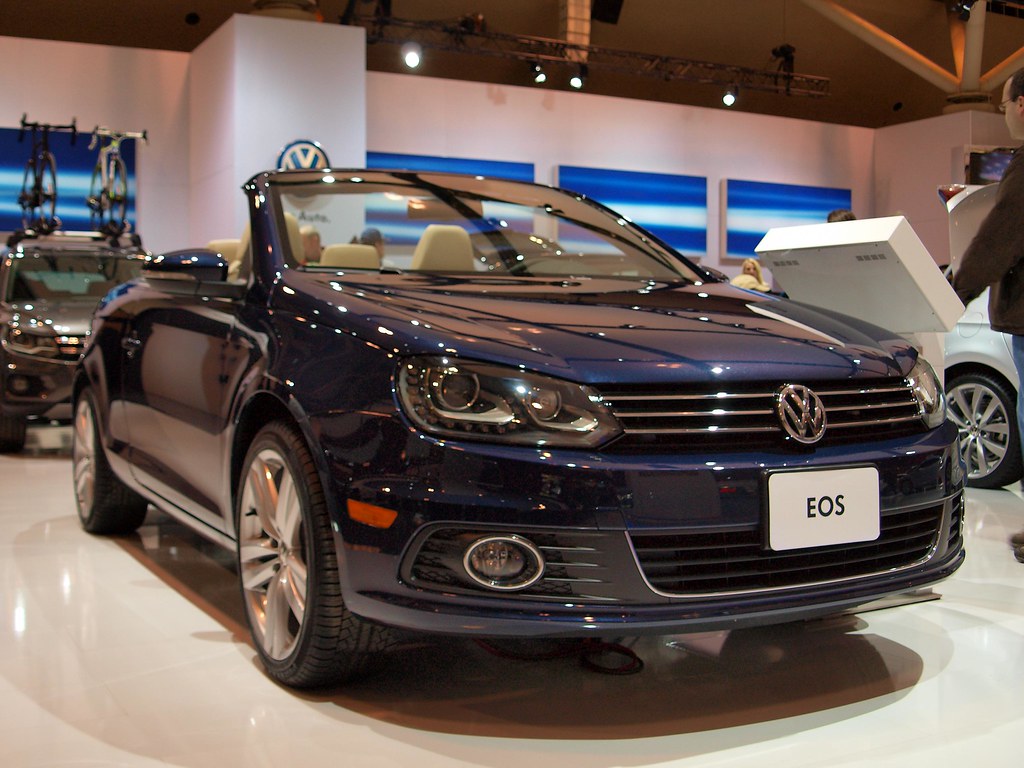
3. **Volkswagen Eos**The Volkswagen Eos, initially heralded for its innovative retractable hardtop and an integrated sunroof, presented a compelling vision of open-air motoring. However, despite these unique and forward-thinking features, the Eos consistently struggled to maintain its value, a problem stemming from a confluence of factors, most notably its high repair costs and the inherent complexity of its distinctive roof mechanism. What was meant to be a selling point ultimately became its Achilles’ heel.
While the concept of a retractable hardtop with an integrated sunroof was indeed advanced for its time, its intricate design meant a higher propensity for failure and significantly more expensive repairs when issues arose. Owners frequently reported malfunctions with the system, transforming what should have been a seamless transformation from coupe to convertible into a source of frustration and substantial financial outlay. The novelty of the roof system often gave way to the reality of its maintenance demands.
Moreover, the Eos failed to carve out a distinct identity within Volkswagen’s broader lineup, leaving it somewhat adrift in the market. It didn’t quite capture the sportiness of other convertibles, nor did it fully embrace the mainstream appeal of Volkswagen’s more popular models. This lack of clear market positioning meant that while it was unique, it didn’t generate a passionate following or strong demand, which is crucial for value retention.
Its niche appeal, combined with a relatively high initial purchase price for a Volkswagen, further contributed to its rapid depreciation. Buyers expecting premium features often found the ownership experience complicated by the roof’s unreliability and the associated costs. These factors combined to make the Eos an example of a car where innovative engineering did not translate into long-term market success or retained value, leaving owners with a significant loss on resale.
Car Model Information: 2012 Volkswagen Eos Lux
Name: Volkswagen Eos
Manufacturer: Volkswagen
Production: 2006–2016
Assembly: Palmela
Class: Sport compact
BodyStyle: Convertible
Layout: Front-engine, front-wheel-drive layout
Platform: Volkswagen Group A platform#A5 (PQ35)
Engine: Inline-four engine
Transmission: Manual transmission
Wheelbase: 2578 mm
Abbr: on
Length: 4407 mm
Disp: flip
Width: 1791 mm
Height: 1443 mm
Related: Volkswagen Golf Mk5,Volkswagen Scirocco
Designer: Robert Lešnik
Successor: Volkswagen T-Roc
Categories: 2010s cars, All articles needing additional references, All articles with unsourced statements, Articles needing additional references from March 2021, Articles with short description
Summary: The Volkswagen Eos is a compact two-door, four passenger convertible manufactured and marketed by Volkswagen from 2006 to 2016 — noted for its five-section hardtop retractable roof which itself featured an independently operable glass sunroof. VW marketed the body configuration as a CSC (coupe-sunroof-convertible).
Assembled at AutoEuropa in Portugal, the Eos succeeded the Golf Cabriolet. Eos production ended in May 2015, with a limited number of base trim models marketed as 2016 models in the United States.
The model name derived from Eos, the Greek goddess of the dawn.
Get more information about: Volkswagen Eos
Buying a high-performing used car >>>
Brand: Volkswagen Model: Eos
Price: $9,899 Mileage: 98,336 mi.
Read more about: Beyond the Myth: 14 Luxury Coupes That Deliver High-End Thrills Without the ‘Never-Ending Expense’
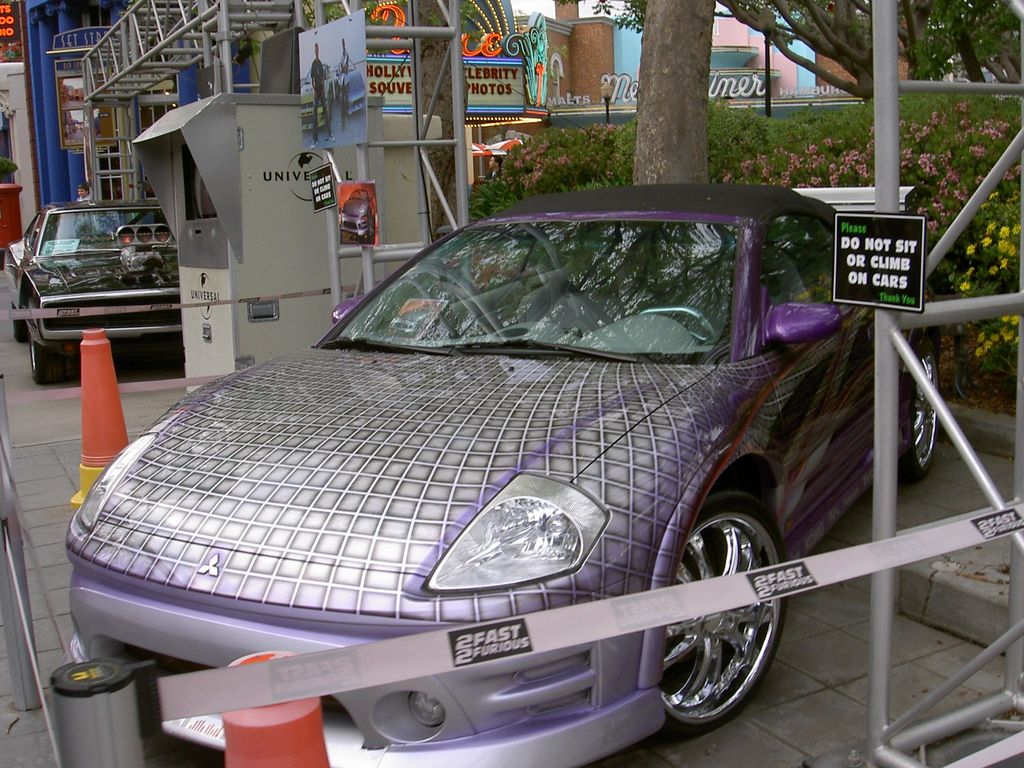
4. **Mitsubishi Eclipse Spyder**The Mitsubishi Eclipse Spyder enjoyed an initial burst of popularity, captivating buyers with its sporty aesthetics and accessible performance. Yet, despite this early success, the convertible struggled profoundly to sustain its value as the years progressed, becoming a prime candidate for rapid depreciation. Its failure to maintain market relevance can be attributed to an aging platform and a noticeable lack of significant updates over its production run.
In a rapidly evolving automotive landscape, the Eclipse Spyder found itself less and less competitive against newer models that offered advancements in technology, efficiency, and driving dynamics. Its foundations, increasingly behind the curve, meant that it simply couldn’t keep pace with fresh designs and engineering from rival manufacturers. This stagnation made it appear dated, diminishing its appeal to a market constantly seeking the latest innovations and performance enhancements.
Further accelerating its depreciation was the broader declining popularity of the Mitsubishi brand in the U.S. market. As Mitsubishi’s overall market share dwindled and its product lineup became less prominent, the brand’s perception weakened. This decline in brand strength cast a shadow over all its models, including the Eclipse Spyder, as buyers became wary of long-term support, parts availability, and the general stigma associated with a struggling automotive marque.
As a cumulative result, the Eclipse Spyder transformed from an initially appealing sports convertible into a less desirable option for buyers primarily focused on value retention. The combination of an outdated design, a lack of competitive updates, and a weakening brand presence ensured that owners faced a significant financial hit when attempting to resell their vehicles. It stands as a testament to how even initially popular models can quickly become a burden in the used car market without continuous investment and a strong brand.
Car Model Information: 2024 Cadillac XT5 Premium Luxury
Name: Mitsubishi Eclipse
Caption: Fourth-generation Mitsubishi Eclipse GS coupe
Manufacturer: Mitsubishi Motors
Production: 1989–August 2011 (906,876 units)
ModelYears: 1990–2012
Assembly: Normal, Illinois
Class: Sport compact
BodyStyle: liftback,coupé
Layout: Front-engine, front-wheel-drive layout,Front-engine, four-wheel-drive layout
Predecessor: Mitsubishi Cordia,Mitsubishi Starion
Categories: 1990s cars, 2000s cars, 2010s cars, All-wheel-drive vehicles, All articles with unsourced statements
Summary: The Mitsubishi Eclipse was a sport compact car manufactured and marketed by Mitsubishi over four generations in the 1990–2012 model years. A convertible body style was added during the 1996 model year.
The first two generations were marketed simultaneously as rebadged variants, including the Eagle Talon and Plymouth Laser — and were a byproduct of Mitsubishi Motors and Chrysler Corporation’s close alliance. Their partnership in turn gave rise to Diamond-Star Motors (DSM). In Japan, the first two generations were sold at a specific Japanese retail chain called Mitsubishi Car Plaza. The third, 2000–2005 generation shared an extended wheelbase variant of their platform with the Chrysler Sebring and Dodge Stratus. In May 2005, the fourth, and final generation Eclipse was introduced, replacing the Chrysler platform used for the third generation with the PS platform.
According to Mitsubishi, the Eclipse was named after an unbeaten 18th-century English racehorse that won 18 races in a row and then retired.
At the end of August 2011, the final Eclipse was manufactured and auctioned for charity.
In 2017, Mitsubishi resurrected the Eclipse name on a compact crossover vehicle, called the Eclipse Cross.
Get more information about: Mitsubishi Eclipse
Buying a high-performing used car >>>
Brand: Mitsubishi Model: Eclipse Spyder
Price: $44,600 Mileage: 31,428 mi.
Read more about: Unearthing the Beasts: 12 Forgotten ’90s Powerhouses That Still Outrun Modern Machines by 2025

5. **Saab 9-3 Convertible**The Saab 9-3 Convertible, a vehicle known for its distinctive quirky design and a dedicated, loyal fanbase, experienced a catastrophic drop in value following the dramatic bankruptcy of Saab in 2011. The demise of the brand sent shockwaves through the automotive world and effectively obliterated the resale prospects of its entire fleet, leaving owners of the 9-3 Convertible particularly vulnerable to significant financial losses.
Despite the passion of its owners and the car’s unique appeal, the uncertainty surrounding parts availability and future service options proved to be an insurmountable hurdle for potential buyers. When an automaker ceases to exist, the question of long-term support becomes paramount, and the lack of clear answers about maintenance infrastructure and component supply immediately turned away those considering a used Saab. This made the 9-3 Convertible a highly risky investment.
The 9-3’s idiosyncratic design, while charming to its niche audience, further complicated its position in a market already wary of its brand’s future. Its uniqueness meant it didn’t appeal to a broad mainstream audience, and without the backing of a viable manufacturer, its distinctiveness transformed from a selling point into a liability. The combination of an acquired taste in design and an absent parent company was a recipe for rapid depreciation.
This confluence of factors—the brand’s demise, the ensuing uncertainty over parts and service, and its niche design appeal—led to significant depreciation, leaving the Saab 9-3 Convertible struggling to find a place in the used car market. For owners, the experience was a stark reminder that a car’s value is often inextricably linked to the health and longevity of its brand, making it a prime example of a vehicle impossible to resell without a loss.
Car Model Information: 2024 Cadillac XT5 Premium Luxury
Name: Saab 9-3
Caption: 2008–2009 Saab 9-3 sedan
Manufacturer: General Motors
Production: 1998–2014
Layout: Front-engine, front-wheel-drive layout
Predecessor: Saab 900
Successor: NEVS 9-3EV
Class: Compact executive car
Categories: 2000s cars, 2010s cars, All-wheel-drive vehicles, All articles with unsourced statements, Articles with Danish-language sources (da)
Summary: The Saab 9-3 (pronounced nine-three) is a compact executive car initially developed and manufactured by the Swedish automaker Saab.
The first generation 9-3 (1998–2003) is based on the GM2900 platform, changing to the GM Epsilon platform with the introduction of the second-generation car (2003–2012). Other vehicles using this platform include the Opel Vectra, Chevrolet Malibu, and Cadillac BLS.
National Electric Vehicle Sweden (NEVS), Saab’s then parent company briefly assembled a few 9-3 sedans during 2013 and 2014.
Get more information about: Saab 9-3
Buying a high-performing used car >>>
Brand: Saab Model: 9-3 Convertible
Price: $44,600 Mileage: 31,428 mi.
Read more about: Unsung Heroes of the Asphalt: 14 Low-Maintenance Classic Cars That Deserve a Spot in Your Garage
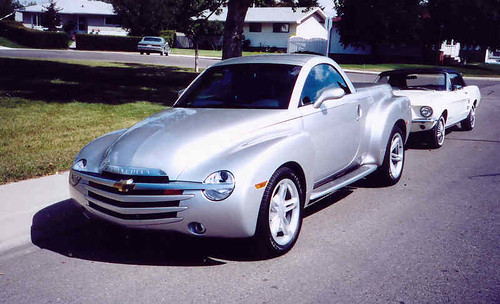
6. **Chevrolet SSR**The Chevrolet SSR was a vehicle that, despite its undeniably eye-catching retro styling, struggled profoundly to find a clear identity in the automotive market, a fundamental issue that directly hurt its resale value. Blending aspects of a pickup truck with the open-air enjoyment of a convertible, the SSR presented a novel concept that, unfortunately, failed to resonate with a broad audience, ultimately leading to significant market confusion and diminished demand.
The unique blend of utility and leisure that the SSR attempted to offer made it difficult for consumers to categorize. Was it a truck for practical purposes? Or a roadster for weekend enjoyment? This ambiguity meant it didn’t fit neatly into established market segments, preventing it from attracting a dedicated customer base. Its quirky nature, while distinctive, proved to be too niche to sustain strong sales or long-term value.
Beyond its identity crisis, the SSR was also criticized for its heavy weight and underwhelming performance, especially considering its V8 engine. While its retro design harked back to classic American vehicles, its driving dynamics often failed to live up to the expectations that such styling might inspire. The hefty curb weight made it feel less nimble than desired, and its performance, though respectable, wasn’t exhilarating enough to overcome its other drawbacks.
The SSR’s niche appeal meant that it did not connect with a wide demographic, resulting in sluggish sales figures throughout its production run. This limited appeal and slow uptake in the new car market naturally foreshadowed its struggles in the used car arena. Over time, as its unique charm faded and its practical shortcomings became more apparent, the SSR’s value declined rapidly, cementing its reputation as a convertible difficult to move without a substantial financial hit.
It became an example of how even bold, unconventional designs need to be backed by clear market positioning and compelling performance to maintain value and desirability in the long run. For owners, the SSR often represented a significant investment that quickly turned into a depreciating asset, illustrating the challenges of owning a vehicle that struggles to define its purpose and audience.
Having explored the initial set of convertibles that proved to be significant financial burdens for their owners, we now turn our attention to the remaining five models that share a similar fate in the used car market. These vehicles, despite their varied intentions and initial market positions, ultimately fell victim to factors such as brand perception, specific mechanical vulnerabilities, and market missteps that rendered them exceedingly difficult to resell without incurring a substantial loss. Understanding these examples further solidifies the critical importance of informed decision-making when considering a drop-top investment.
Car Model Information: 2004 Chevrolet SSR LS
Name: Chevrolet SSR
Manufacturer: Chevrolet
Production: 2003–2006
ModelYears: 2003–2006
Assembly: Lansing, Michigan
Class: Pickup truck
BodyStyle: ubl
Platform: GMT360
Related: ubl
Layout: Front-engine, rear-wheel drive layout
Engine: ubl
Transmission: ubl
Wheelbase: 116.0 in
Abbr: on
Length: ubl
Width: 78.6 in
Height: ubl
Designer: ubl
Categories: All articles needing additional references, All articles with unsourced statements, Articles needing additional references from July 2008, Articles with short description, Articles with unsourced statements from August 2023
Summary: The Chevrolet SSR (Super Sport Roadster) is a retro-styled and retractable hardtop convertible pickup truck manufactured by Chevrolet between 2003 and 2006.
During the 2003 and 2004 model years, the SSR used General Motors’ 5.3 L 300 hp (224 kW; 304 PS) Vortec 5300 V8. Performance was 7.7 seconds for 0–60 mph (0–97 km/h) with a 15.9 second 1⁄4 mile (402.3 m) time at 86.4 mph (139.0 km/h).
For the 2005 model year, the SSR used the 390 hp (291 kW; 395 PS) LS2 V8 engine also used in the C6 Corvette, Trailblazer SS, and Pontiac GTO, now offering a manual transmission option, the six-speed Tremec, for the first time. Performance improved dramatically with the LS2; the 6-speed manual version had an advertised 0–60 mph (97 km/h) acceleration time of 5.29 seconds. In addition, GM badges were added to the vehicle.
For 2006, output of the LS2 increased to 395 hp (295 kW; 400 PS).
Get more information about: Chevrolet SSR
Buying a high-performing used car >>>
Brand: Chevrolet Model: SSR
Price: $21,799 Mileage: 54,685 mi.
Read more about: Safety Risk Alert: 15 Popular SUVs That Failed the Toughest Crash Tests, According to Leading Safety Agencies
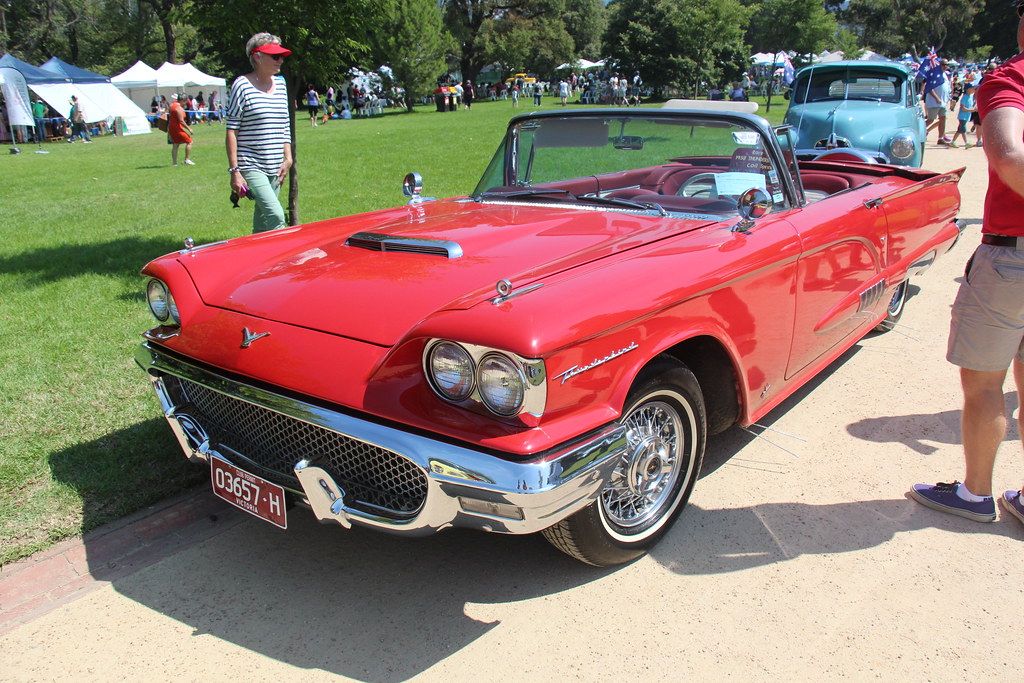
7. **Ford Thunderbird (2002-2005)**The early 2000s saw Ford attempt to reignite a legendary nameplate with the revival of the Thunderbird, a move clearly intended to tap into a rich vein of nostalgic appeal. This iteration, produced from 2002 to 2005, sported a distinct retro design that certainly turned heads, harking back to the iconic two-seater models of the 1950s. While visually striking and evoking a sense of automotive history, the key challenge lay in whether this modern interpretation could genuinely capture the essence and magic of its revered predecessors, or if it would merely be a stylistic homage lacking true underlying substance and compelling market value.
Unfortunately for many who invested in this revival, the new Thunderbird struggled significantly to live up to the performance expectations often associated with its prestigious lineage. Critics and consumers alike frequently pointed to its rather lackluster performance as a notable drawback, especially when juxtaposed against its relatively high price point in the segment. This combination of a premium acquisition cost and an uninspiring driving dynamic meant the vehicle failed to deliver the compelling value proposition that discerning buyers typically seek in a convertible of this caliber, impacting its long-term desirability.
Beyond its performance shortcomings, the Thunderbird also suffered from a somewhat limited array of features for its price range, further questioning its value equation. This absence of comprehensive amenities and advanced technological integrations, coupled with an appeal that didn’t resonate broadly across the automotive landscape, meant it struggled to attract a wide audience beyond a niche group of initial enthusiasts. Its distinctive styling alone, while a strong initial draw, proved insufficient to overcome these perceived deficiencies, steadily diminishing its overall appeal in a competitive luxury-performance segment.
The market’s lukewarm reception, characterized by limited mass appeal and consistent critical observations, inevitably began to take its toll on the Thunderbird’s resale value. Ford’s subsequent decision to discontinue the model, marking a relatively short production run for such a historically significant name, only served to hasten its depreciation even further. Ultimately, the 2002-2005 Thunderbird transformed into a less attractive option for both collectors hoping for a future classic and everyday buyers looking for a sound automotive investment, cementing its reputation as a convertible difficult to move without a substantial financial hit.
Car Model Information: 2003 Ford Thunderbird Premium
Name: Ford Thunderbird
Caption: 1957 Thunderbird
Manufacturer: Ford Motor Company
Production: unbulleted list
ModelYears: unbulleted list
Class: unbulleted list
Layout: Front-engine, rear-wheel drive layout
Categories: 1960s cars, 1970s cars, 1980s cars, 1990s cars, 2000s cars
Summary: The Ford Thunderbird is a personal luxury car manufactured and marketed by Ford Motor Company for model years 1955 to 2005, with a hiatus from 1998 to 2001.
Ultimately gaining a broadly used colloquial nickname, the T-Bird, the model was introduced as a two-seat convertible, subsequently offered variously in a host of body styles including as a four-seat hardtop coupe, four-seat convertible, five-seat convertible and hardtop, four-door pillared hardtop sedan, six-passenger hardtop coupe, and five-passenger pillared coupe, before returning in its final generation, again as a two-seat convertible.
At its inception, Ford targeted the two-seat Thunderbird as an upscale model. The 1958 model year design introduced a rear seat and arguably marked the expansion of a market segment that came to be known as personal luxury cars, positioned to emphasize comfort and convenience over handling and high-speed performance.
Get more information about: Ford Thunderbird
Buying a high-performing used car >>>
Brand: Ford Model: Thunderbird
Price: $1 Mileage: 49,430 mi.
Read more about: Nine Classic American Cars That Deserve a Modern Comeback

8. **Chrysler Crossfire Roadster**The Chrysler Crossfire Roadster emerged as an intriguing blend of American design ambition and German engineering precision, borrowing significantly from Mercedes-Benz under the hood. While its unique, polarizing aesthetic certainly drew immediate attention and marked it as distinct on the road, the car ultimately didn’t quite hit the intended mark in the broader automotive market. This distinctive look, intended as a selling point, often overshadowed underlying issues that would later plague its resale value.
Beneath its eye-catching exterior, the Crossfire Roadster was built upon an outdated platform, specifically that of the Mercedes-Benz SLK from the late 1990s. This foundation meant that despite its fresher exterior, the car inherited limitations, particularly evident in its cramped interior. The cabin often felt restrictive, failing to offer the spaciousness or modern ergonomic comfort that buyers were increasingly expecting from convertibles in its price bracket, leading to significant drawbacks for daily usability and passenger comfort.
From a performance standpoint, the Crossfire Roadster struggled to genuinely compete with more dynamically capable rivals within its segment. While adequate, its driving dynamics weren’t exhilarating enough to justify its unique styling or overcome its inherent practical limitations. This middling performance, when combined with Chrysler’s broader reputation for inconsistent quality, further chipped away at buyer confidence and interest. The car’s unique proposition simply couldn’t overshadow its pragmatic shortcomings.
These factors — the car’s unique but divisive design, its reliance on an aging platform, a cramped interior, and an inability to outperform competitors — coalesced to drive a steep decline in its market value. The Chrysler Crossfire Roadster became a prime example of a vehicle where an intriguing concept and striking design couldn’t compensate for a lack of competitive substance and brand perception, leaving owners to face substantial losses when attempting to sell their distinctive drop-tops.
Car Model Information: 2024 Cadillac XT5 Premium Luxury
Name: Chrysler Crossfire
Caption: 2004 Chrysler Crossfire coupe
Manufacturer: DaimlerChrysler
Production: February 2003 – December 2007 (76,014 units)
ModelYears: 2004–2008
Assembly: Germany
Designer: Eric Stoddard
Class: Sports car
BodyStyle: convertible (car),fastback
Platform: Chrysler ZH,Mercedes-Benz SLK-Class (R170)
Related: Mercedes-Benz SLK-Class (R170)
Layout: Front-engine, rear-wheel-drive layout
Engine: Mercedes-Benz
Transmission: Mercedes-Benz,Chrysler NSG370 transmission
Wheelbase: 94.5 in
Abbr: on (roadster)
Length: 159.8 in
Width: 69.5 in
Height: {{convert,51.5,in,mm,0,abbr=on
Predecessor: Chrysler Prowler,Chrysler TC by Maserati
Categories: Articles with short description, Cars discontinued in 2007, Cars introduced in 2003, Chrysler vehicles, Commons category link from Wikidata
Summary: The Chrysler Crossfire is a rear-wheel drive, two-seat sports car, marketed by Chrysler and manufactured by Karmann of Germany from 2004 through the 2008 model years.
Developed during the period when Chrysler and Mercedes Benz had merged, known as Daimler Chrysler, the two-seater uses the Mercedes-Benz R170 platform and shares 80% of its components with the first generation SLK.
Beginning in 2001 as a concept car styled by Eric Stoddard, the Crossfire was further refined by Andrew Dyson before production started in 2003 for the 2004 model year sales.
Get more information about: Chrysler Crossfire
Buying a high-performing used car >>>
Brand: Chrysler Model: Crossfire Roadster
Price: $44,600 Mileage: 31,428 mi.
Read more about: Get Ready to Rev Your Engines: A Deep Dive Into Val Kilmer’s Jaw-Dropping Car Collection, Both On-Screen and Off!
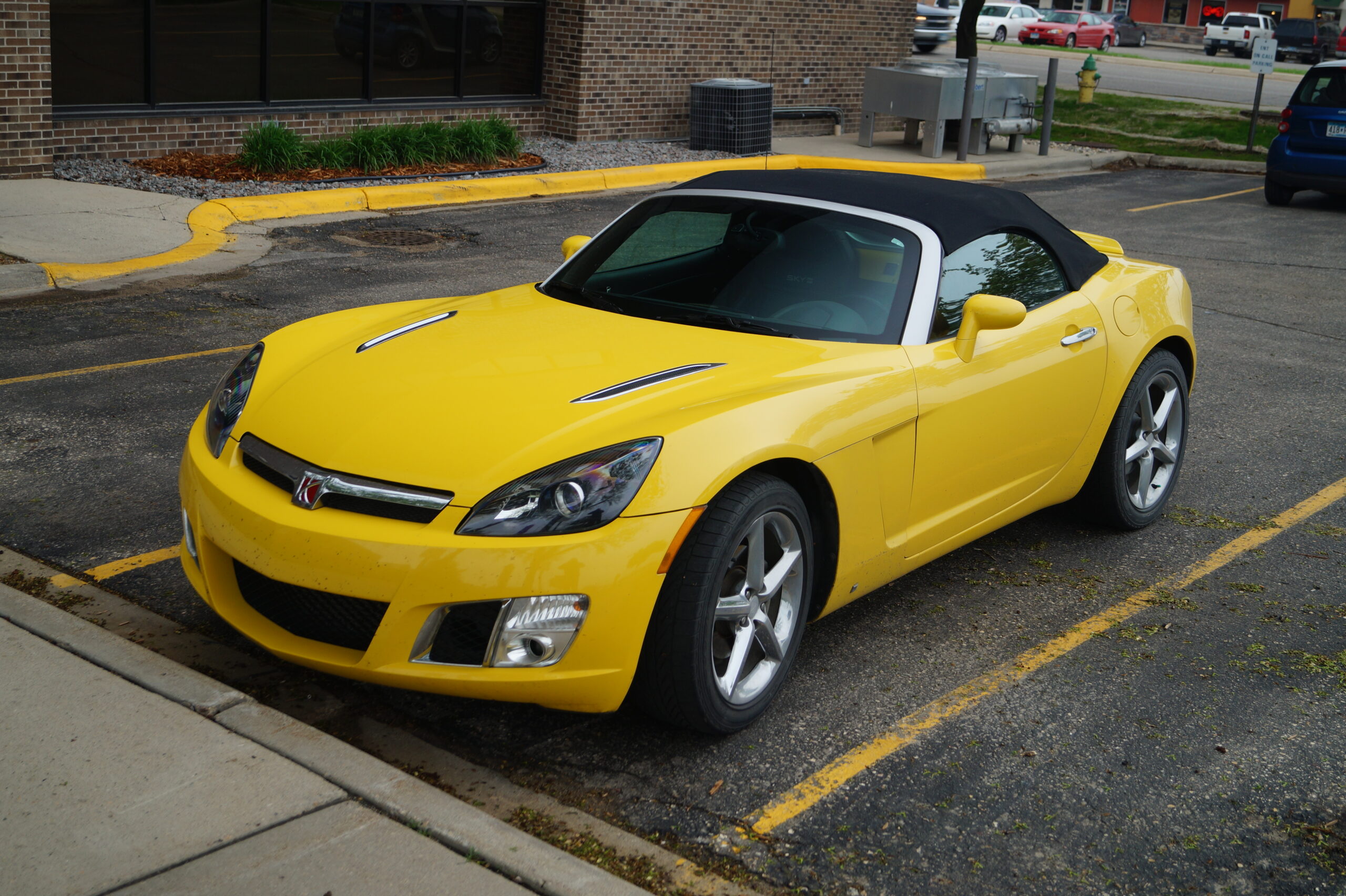
9. **Saturn Sky**The Saturn Sky entered the market with a promise of sharp styling and engaging driving dynamics, aiming to provide a spirited roadster experience. Indeed, its contemporary looks and responsive handling initially garnered some positive attention, positioning it as an attractive, albeit niche, offering within the convertible segment. Owners often appreciated its nimble feel and modern aesthetic, which distinguished it from some of its more traditional competitors.
However, the Sky’s journey in the automotive market was tragically cut short by the dramatic discontinuation of the entire Saturn brand in 2010. This abrupt exit from the market had a devastating effect on the resale value of all Saturn vehicles, and the Sky convertible was unfortunately no exception. As the brand ceased operations, the desirability of the Sky rapidly waned, creating significant uncertainty among potential buyers regarding future parts availability and service support for an orphaned marque.
The brand’s demise created an understandable apprehension among prospective owners, who became wary of the long-term viability of owning a vehicle from a defunct manufacturer. No one wants to face the logistical and financial headaches of tracking down scarce parts or finding qualified technicians for a vehicle no longer actively supported. This cloud of uncertainty, compounded by its limited production numbers during its short lifespan, severely hampered its ability to retain value in the secondary market.
Despite its initial appeal and dynamic capabilities, the Saturn Sky became a tough sell due to these overwhelming external factors. The combination of losing its brand identity and the subsequent concerns over maintenance and support ensured that the Sky’s market value plummeted swiftly. It stands as a stark reminder that even well-designed and fun-to-drive cars are vulnerable to the broader strategic decisions of their parent companies, making it an undeniable challenge for owners to resell without a loss.
Car Model Information: 2007 Saturn Sky
Name: Saturn Sky
Caption: 2007 Saturn Sky
Manufacturer: General Motors
Aka: Opel GT#GT (roadster) (2007–2010),Daewoo G2X
Production: 2006–2009
ModelYears: 2007–2010
Assembly: Wilmington, Delaware
Designer: Franz von Holzhausen
Class: Sports car
BodyStyle: Roadster (automobile)
Platform: GM Kappa platform
Related: Pontiac Solstice
Layout: Front-engine, rear-wheel-drive layout#Front mid-engine, rear-wheel-drive layout
Engine: ubl
Transmission: Aisin Seiki,GM 5L40 transmission
Wheelbase: 95.1 in
Abbr: on (Red Line)
Length: 161.1 in
Width: 71.4 in
Height: 50.2 in
Weight: 2940 lb
Categories: All articles with specifically marked weasel-worded phrases, Articles with short description, Articles with specifically marked weasel-worded phrases from September 2025, Cars discontinued in 2009, Cars introduced in 2006
Summary: The Saturn Sky is a convertible sports car that was produced by Saturn, and was initially released in the first quarter of 2006 as a 2007 model. It uses the Kappa automobile platform shared with the Pontiac Solstice. The Sky concept was shown at the 2005 North American International Auto Show, with the production version following at the 2006 show. It was built at GM’s Wilmington Assembly plant in Wilmington, Delaware, alongside the Solstice. The Sky featured 18-inch wheels and a 2.4 L (146 cu in) Ecotec LE5 inline-four engine with direct injection and variable valve timing that produced 177 hp (132 kW), a new 2.0-litre turbocharged direct injected inline-four engine also featuring VVT that made 260 hp (194 kW) and 260 lb⋅ft (353 N⋅m). An optional dealer-installed MAP sensor and ECM flash upgrade kit was also available for the Red Line model from 2008 onwards. Both five-speed manual and automatic transmissions were available.
The styling for the Sky, penned by Franz von Holzhausen, was based on the Opel Speedster’s design. It was available in some European markets as the Opel GT. A rebadged version named the Daewoo G2X was unveiled as a concept vehicle for the South Korean market in 2006, then released for sale in September 2007. The price of the G2X was nearly double the price of the Sky and Solstice as sold in the United States, likely due to tariffs and cost of shipping from the Wilmington plant.
The Wilmington Assembly plant closed in July 2009, ending production as both the Pontiac and Saturn nameplates were retired.
Get more information about: Saturn Sky
Buying a high-performing used car >>>
Brand: Saturn Model: Sky
Price: $12,500 Mileage: 22,815 mi.
Read more about: Celestial Luminaries: An In-Depth Journey Through the Extraordinary Lives of Stars

10. **Toyota Solara Convertible**The Toyota Solara Convertible often stood out for its reputation for reliability and comfort, traits deeply ingrained in the Toyota brand ethos. Positioned as a practical and dependable alternative to sportier, more temperamental convertibles, it aimed to appeal to buyers seeking an open-air experience without the inherent risks often associated with such vehicles. It was, in essence, a safe and predictable choice for those prioritizing peace of mind.
Despite these commendable attributes, the Solara Convertible’s downfall in terms of resale value stemmed primarily from its bland styling and a noticeable lack of excitement on the road. While it reliably transported its occupants with the top down, it failed to ignite any passionate emotional connection or inspire a dedicated fanbase. Its design, while inoffensive, was largely unadventurous, making it blend into the background rather than stand out in the crowded convertible market.
The Solara’s image as a ‘safe’ or ‘sensible’ choice, while a strength for its fixed-roof counterparts, did not resonate effectively with convertible buyers. Individuals seeking a drop-top often prioritize dynamic driving, distinctive aesthetics, and a certain flair that the Solara, unfortunately, did not deliver. This mismatch between its brand identity and the desires of the typical convertible consumer meant it struggled to carve out a compelling niche, hindering its long-term market appeal.
Over time, this perception of being a reliable but uninspiring option led to a rapid decline in its market value. While its mechanical dependability was never in question, the lack of driving excitement and a memorable design meant that when owners decided to sell, they often faced a significant depreciation. The Toyota Solara Convertible ultimately serves as an example of how even a brand synonymous with reliability can struggle in a segment where emotion and style often outweigh pure practicality.
Car Model Information: 2023 BMW X3 xDrive30i
Name: Toyota Camry Solara
Manufacturer: Toyota
Aka: Toyota Solara
Production: 1998–2008
ModelYears: 1999–2008
Class: Mid-size car
BodyStyle: ubl
Layout: Front-engine, front-wheel-drive layout
Related: Toyota Camry
Predecessor: Toyota Camry (XV10)
Categories: 2000s cars, All articles needing additional references, All articles with unsourced statements, Articles needing additional references from April 2018, Articles with short description
Summary: The Toyota Camry Solara, popularly known as the Toyota Solara, is a mid-size coupé/convertible built by Toyota. The Camry Solara is mechanically based on the Toyota Camry and effectively replaced the discontinued Camry Coupé (XV10); however, in contrast with its predecessor’s conservative design, the Camry Solara was designed with a greater emphasis on sportiness, with more rakish styling, and uprated suspension and engine tuning intended to provide a sportier feel. The coupe was launched in late 1998 for model year 1999. In 2000, the convertible was introduced, effectively replacing the Celica convertible in Toyota’s North American lineup.
The second-generation Camry Solara debuted in 2003 for model year 2004, initially offered as a coupe; the second-generation convertible was introduced in the spring of 2004 as a 2005 model. Coupe production ended in mid-2008. Despite official statements that the convertible might be sold until 2010 if demand was sufficient, production was suspended in December 2008 and never resumed.
Get more information about: Toyota Camry Solara
Buying a high-performing used car >>>
Brand: Toyota Model: Solara Convertible
Price: $35,086 Mileage: 44,248 mi.
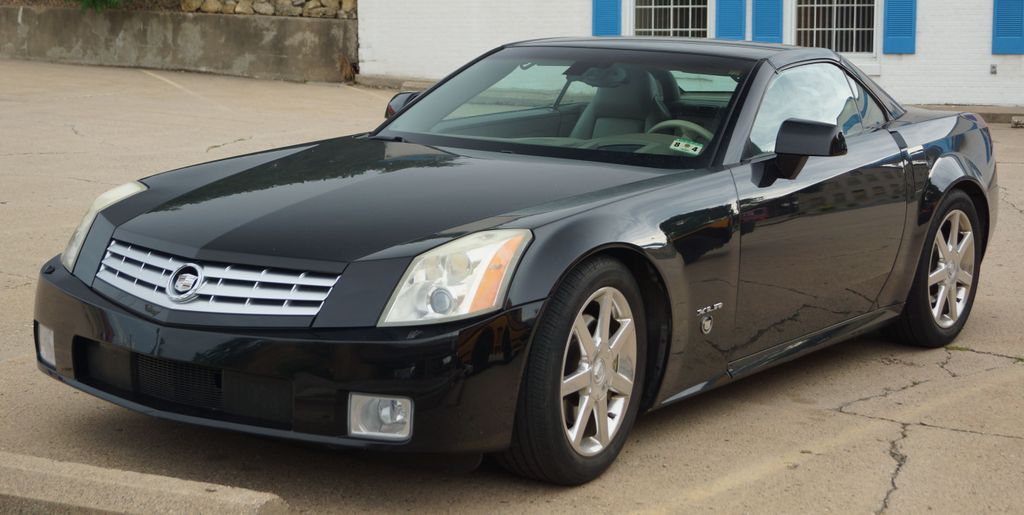
11. **Cadillac XLR**The Cadillac XLR represented an ambitious venture for General Motors, aiming to combine luxury features with the performance underpinnings of a Corvette-based platform. On paper, this fusion promised a compelling grand tourer, offering sophisticated amenities alongside genuine sporting capability. It was intended to elevate Cadillac’s image and compete directly with established luxury roadsters from Europe, providing a distinctly American take on premium open-air motoring.
However, despite its impressive luxury features and the inherent performance potential of its Corvette architecture, the Cadillac XLR struggled significantly with high depreciation. A primary contributor to this issue was its rather steep initial price, which immediately placed it in direct competition with highly respected and well-established European rivals. For many prospective buyers, the Cadillac badge, at that time, simply did not command the same level of prestige or perceived value as its German or British counterparts in that premium segment.
Beyond its pricing, the XLR faced a significant challenge with unclear market positioning. It wasn’t fully embraced as either an uncompromised luxury car with the refinement expected from the segment’s elite, nor was it wholeheartedly accepted as a true sports car that could go head-to-head with pure performance machines. This identity crisis confused potential buyers, making it difficult for the XLR to attract a dedicated customer base who understood its unique, somewhat hybridized, value proposition.
This complex interplay of a high initial cost, a relatively niche appeal, and an ambiguous market identity contributed directly to its significant loss of value over time. Owners often found themselves with a luxurious and capable convertible that simply couldn’t command a strong resale price, reflecting the market’s difficulty in categorizing and valuing such a distinct offering. The Cadillac XLR, therefore, stands as a testament to how even strong engineering and luxury appointments can falter in the resale market without clear branding and competitive pricing.
Owning a convertible is often about embracing a lifestyle, a desire for freedom, and the sheer joy of open-air motoring. These vehicles, at their best, offer an unmatched sensory experience, transforming mundane commutes into memorable journeys. Yet, as our exploration of these eleven convertibles clearly demonstrates, the romantic ideal can quickly collide with the stark realities of market dynamics, mechanical integrity, and brand perception. For every model that holds its value, there are others that become cautionary tales, silently draining the wallets of their unsuspecting owners.
The convertibles discussed here, from the design missteps of the Chrysler Sebring to the brand demise that crippled the Saturn Sky and Saab 9-3, the complex roof mechanisms of the VW Eos and Audi A4 Cabriolet, or the identity crises of the Chevrolet SSR and Cadillac XLR, each illustrate unique pathways to depreciation. While their initial allure may have been undeniable, their long-term value retention was consistently undermined by a confluence of factors, ranging from reliability issues and outdated platforms to unclear market positioning and the significant impact of a brand’s health.
Car Model Information: 2004 Cadillac XLR Base
Name: Cadillac XLR
Manufacturer: Cadillac
Production: 2003–2009
ModelYears: 2004–2009
Predecessor: Cadillac Allanté
Class: Grand tourer
BodyStyle: roadster (automobile)
Layout: FR layout
Platform: GM Y platform
Assembly: Bowling Green, Kentucky
Designer: Tom Peters (prod. exterior: 1999, 2000)
Related: Chevrolet Corvette (C5),Chevrolet Corvette (C6)
Transmission: GM 5L40-E transmission#5L50,GM 6L80 transmission
Engine: Northstar engine series#LH2 (VIN “A”),V8 engine
Wheelbase: cvt
Length: cvt
Width: cvt
Height: cvt
Weight: cvt
Categories: Articles with short description, Cadillac vehicles, Cars discontinued in 2009, Cars introduced in 2003, Commons category link from Wikidata
Summary: The Cadillac XLR is a two-passenger roadster manufactured and marketed by Cadillac from 2003 to 2009 across a single generation — and noted for its power retractable hardtop, Bulgari designed interior instruments, head-up display, adaptive suspension, rear-mounted transmission and near 50/50 front-to-rear weight distribution. The XLR was introduced at the 2003 North American International Auto Show as a halo model for Cadillac, and began production for the 2004 model year. The design was inspired by the 1999 Evoq concept.
The XLR shares much of its construction design with the C6 Chevrolet Corvette that was introduced one year later, including its GM Y platform, hydroformed steel perimeter side rails, folded steel backbone, tubular steel front and rear bulkheads, aluminum windshield structure, magnesium steering-column mounts, aluminum/balsawood composite floorboards and composite bodywork technology. Unique to the XLR are its engine, bodywork, interior, suspension settings, and power retractable hardtop. Both Chevrolet and Cadillac were manufactured at GM’s Bowling Green Assembly, with the XLR manufactured at a dedicated work station adjacent to the Corvette assembly line, engineered to facilitate routing of componentry to the XLR’s dedicated assembly station.
The XLR entered production a year before the Chevrolet, as the first production Cadillac with radar-based adaptive cruise control (ACC) or both heated and cooled seats — was subsequently nominated for the North American Car of the Year award for 2004.
Get more information about: Cadillac XLR
Buying a high-performing used car >>>
Brand: Cadillac Model: XLR
Price: $35,999 Mileage: 3,370 mi.
Read more about: Automotive Icons Unraveled: The Definitive Account of 15 Star Brands and Models That Fell From Grace
For any automotive enthusiast or casual driver contemplating the acquisition of a convertible, these insights serve as a critical guide. The lesson is clear: beyond the immediate thrill of a drop-top, a thorough understanding of a vehicle’s historical market performance, its mechanical reputation, and the stability of its brand is paramount. Investing in a convertible, particularly a used one, requires due diligence to ensure that the dream of open-road freedom doesn’t transform into the financial burden of a car that’s nearly impossible to resell without a considerable loss. The joy of open-air driving should, after all, come with lasting peace of mind, not financial regret.

